This is a personal page. If you have stumbled upon it, feel free to read on as you won’t find anything here that you shouldn’t. In fact, it will do anyone a benefit to understand all of laws, guidance, and rules to do with cycling. I have collated these into one handy page, more suited to my eye, just in case I need the facts quickly.
“You don’t pay road tax”. “You shouldn’t be on the road”.
Road tax was abolished by Winston Churchill in 1937. The creation and maintenance of roads comes from general taxation; something everyone, regardless of whether they drive a car or not, pays for. The tax commonly referred to as “road tax” is actually car tax, or “vehicle excise duty”. It is a excise duty paid dependant on the amount of emissions the cars produces.
Some will claim bicycles shouldn’t be on the road. They were legally recognised as being carriages, and therefore, rightfully on the road in 1879 in the Taylor vs. Goodwin court case. It was deemed a bicycle, as it is guided as propelled similar to an engine driver, is a carriage. Formally recognised in the Local Government Act 1888 including as a carriage, “bicycles, tricycles, velocipedes and other similar machines”.
CyclingUK’s ‘Don’t Get…Too Close For Comfort’.pdf
Changes to the Highway Code, 29th January 2022 – shown in table or as document (with stated variations) document (with stated variations).
Overtaking:
Rule 163 of the Highway Code states: Overtake only when it is safe and legal to do so. You should:
- give motorcyclists, cyclists and horse riders at least as much room as you would when overtaking a car (see Rules 211 to 215).
This edited photo makes the point visually:
ALSO:
Rule 211
Motorcyclists and cyclists – It is often difficult to see motorcyclists and cyclists, especially when they are coming up from behind, coming out of junctions, at roundabouts, overtaking you or filtering through traffic. Always look out for them before you emerge from a junctionl they could be approaching faster than you think. When turning right across a line of slow-moving or stationary traffic, look out for cyclists or motorcyclists on the inside of the traffic you are crossing. Be especially careful when turning, and when changing direction or lane, Be sure to check mirrors and blind spots carefully.
Rule 212
When passing motorcyclists and cyclists, give them plenty of room (see Rules 162 to 167). If they look over their shoulder it could mean that they intend to pull out, turn right or change direction. Give them time and space to do so.
Rule 213
Motorcyclists and cyclists may suddenly need to avoid uneven road surfaces and obstacles such as drain covers or oily, wet or icy patches on the road. Give them plenty of room and pay particular attention to any sudden change of direction they may have to make.
/// The above Rule 163 by using the word “should” is advisory but if a car overtakes a cyclist too closely, the fact they contravened this is relevant to whether they have or have not committed a “careless driving”, or a more serious “dangerous driving” offence. Info from here.
Rule 166 – DO NOT overtake if there is any doubt, or where you cannot see far enough ahead to be sure it is safe. For example, when you are approaching:
– a corner or bend
– a hump bridge
– the brow of a hill
Rule 167 – DO NOT overtake where you might come into conflict with other road users. For example:
– approaching or at a road junction on either side of the road
– where the road narrows
– where traffic is queuing at junctions or road works
– when you would force another road user to swerve or slow down
– stay behind if you are following a cyclist approaching a roundabout or junction, and you intend to turn left.
///
Road junctions
Rule 170 – Take extra care at junctions. You should:
– watch out for cyclists, motorcyclist, powered wheelchairs/mobility scooters and pedestrians as they are not always easy to see. Be aware that they may not have seen or heard you if you are approaching from behind
– watch out for pedestrians crossing a road into which you are turning. If they have started to cross they have priority, so give way
– not assume, when waiting at a junction, that a vehicle coming from the right and signalling left will actually turn. Wait and make sure
– look all around before emerging. Do not cross or road a road until there is a gap large enough for you to do so safely.
Rule 174 – Box junctions. These have criss-cross yellow lines painted on the road (see page 116). You MUST NOT enter the box until your exit road or lane is clear. However, you may enter the box and wait when you want to turn right, and are only stopped from doing so by oncoming traiffic, or by other vehicles waiting to turn right. At signalled roundabouts, you MUST NOT enter the box unless you can cross over it completely without stopping.
TURNING RIGHT
Rule 179 – Well before you turn right you should
– use your mirrors to make sure you know the position and movement of traffic behind you
– give a right-turn signal
– take up a position just left or the middle of the road or in the space marked for traffic turning right
– leave room for other vehicles to pass on the left if possible
Rule 18o – wait until there is a safe gap between you and any oncoming vehicle. Watch out for cyclists, motorcyclists, pedestrians and other road users. Check your mirrors and blind spot again to make sure you are not being overtaken, and then make the turn, Do not cut the corner. Take great care when turning into a main road; you will need to watch for traffic in both directions and wait for a safe gap.
Remember: Mirrors – Signal – Manoeuvre
TURNING LEFT
Rule 182 – Use your mirrors and give a left-turn signal well before you turn left. Do not overtake just before you turn left and watch out for traffic coming up on your left before you make the turn, especially if driving a large vehicle. Cyclists, motorcyclists and other road users in particular may be hidden from your view.
Rule 183 – When turning
– Keep as close to the left as is safe and practical
– give way to any vehicles using a bus lane, cycle lane or tramway from either direction.
///
FILTERING
Rule 151 – In slow-moving traffic. You should:
– leave enough space to be able to manoeuvre if the vehicle in front breaks down or an emergency vehicle needs to get past
– allow access into and from side roads, as blocking these will add to congestion
– be aware of cyclists and motorcyclist who may be passing on either side
/////////
Road Traffic Act 1988, Section 3 – Careless, and inconsiderate, driving — If a person drives a mechanically propelled vehicle on a road or other public place without due care and attention, or without reasonable consideration for other persons using the road or place, he is guilty of an offence.
Just in case someone cannot understand – here is a video presented by Chris Boardman and with advice from a driving instructor:
POLICE RESPONSE: in general the police response is getting better to dealing with antisocial, careless, dangerous driving. Depending on the seriousness, the driving of a close pass can be accused of careless or with dangerous driving – both carrying points, a fine, or disqualification from driving. As a bare minimum for antisocial driving, the police have the power to serve an official warning to the driver to seize the vehicle under Section 59 of the Police Reform Act, 2002.
CLOSE PASS REPORTING
Reporting to Northants Police is hit and miss. Sometimes the response has been wonderful but for the vast majority of instances, the response is dismal and often I have had to really push to get something done.
I once reported 2 incidents on one day and two days later another incident. I missed their call a few days later so called back 101 ext. 341145 which went to the “Road Safety Team”. I spoke with police officer who was incredibly helpful. She was on the same wave length and understood the issues which I had. She was pro-active in offering what action the police should take. Her name was PC Sarah Craggs 1066.
Another time I reported a car which quite closely overtake but then immediately cut in front of me on a corner. I received a call from PC Rob Stevens 1368 who was very helpful. He said what I expected him to say. He agreed that his actions, as shown by my front camera, were risky. He said that he would be receive a letter about a Section 59 for anti-social driving. Pro-active and positive. This warning stated that if the driver was reported again within 12 months the vehicle would be seized. I agreed with the PC that education is a good solution. UPDATE: 13/04/18. I received a call out of the blue from PC Stevens saying that he wanted to update me on the case. He mentioned that police officers had been tied up doing other stuff and therefore because of the time elapsed were unable to pursue this. He said he will be sending a general warning letter. I accepted this, again stating my point about education and said about it being a shame about the last of warning about Section 59, as this sends a clearer message. Really I should have pushed this. I wasn’t expecting the call and accepted without questioning. I assume he forgot to do it on the original day he called me. I will have to make sure that I state that time is of the essence if I ever have to report anyone again.
If I need to report anything else, ask for either of the above.
Update: March 2019 – I have reported a few incidents of the last few months and noticed no action at all has been taken. Ironically, Northants Police launched Operation Close Pass in the autumn of last year. When the footage is reviewed by officers, they say their opinion is it is not a close pass, it is not likely to proceed to court and dismiss it. I argue for education (see above). The video below was dismissed and I asked to speak to the manager of the control room Sergeant Bettles (I think) who said it was not a close pass. She said the officers before had said the driver waited until after the bend and it was straight and therefore was fine. I argued the distance between the car and the cyclists behind was too close. There was physically not enough room for him to overtake. She said I should take my passion and put it to good use. I am arguing for education by punishment (Section 59 threat) but she didn’t grasp it. She offered me the details of the Safer Road Team. They look for volunteers and I may be keen to do it. David Lee 533 ([email protected]) and Maureen Elfox-Clarke 0284 (I think).
A few times over the last year and a bit (it is now July 2020), I have been in Twitter threads with PC Lee stating why when we report close passes we should be updated and know the outcome. Time and time again he states that it would be in breach of GDPR and that Operation Snap gives a platform to simply upload the police will decide whether they act on it. I repeatedly questioned this and said it was not right as the police may dismiss cases and not act on them. I quoted other forces that feedback on submissions and he claimed that they were breaking the GDPR law. PC Lee months ago promised us feedback saying we would be told the rate of success with Operation Snap. This information never came. My argument was that if there was a campaign that said here are the details from Operation Snap, it is successful and produces great results, more people are likely to submit. It was only after pressing in a thread that FamilyByCycle got these poor stats showing a low success rate. In response to the big long thread, @Bobpark19443563 tweeted an article by road.cc entitled “Some police forces treating close passes of cyclists as a “victimless crime”. It talks about Hertfordshire Police but it could equally be talking about Northants Police. The article states the Cycling UK has found that some police forces are treating a cyclist reporting a close pass as a witness and therefore deeming the act victimless.
According to The Victims Code of Practice (right 6) there is the right to be kept informed about progress of investigation and outcome. A victim of crime is defined as someone who has suffered harm – including physical, mental or emotional harm or economic loss – which was directly caused by a criminal offence. I will be keeping my eye of this and hope that soon Northants Police reverts to considering close pass victims as victims.
Also note, that Section 5 of the Public Order Act 1986 states ‘a person is guilt of an offence if the a) uses threatening (or abuse) words or behaviour, or disorderly behaviour, . . . within the hearing or sight of a person likely to be caused harassment, alarm or distress thereby.
(6) A person guilt of an offence under this section is liable on summary conviction to a fine not exceeding level 4 on the standard scale.
///////////////////////////////////////////////
Rule 140
CYCLE LANES. These are shown by road markings and signs. You MUST NOT drive or park in a cycle lane marked by a solid white line during its times of operation. Do not drive or park in a cycle lane marked by a broken white line unless it is unavoidable. You MUST NOT park in any cycle lane whilst waiting restrictions apply.
Motorist caught parking in a mandatory cycle lane may be given a £30.00 Fixed Penalty Notice.
ALSO parking
Rule 243 – DO NOT stop or park:
– near a school entrance
– anywhere you would prevent access for Emergency Services
– at or near a bus or tram stop or taxi rank
– opposite or within 10 metres (32 feet) or a junction, except in an authorised parking space
– on a bend
– where you would obstruct cyclists’ use of cycle facilities
(few examples above, more on list)
And pavement parking. By section 72, Highway Act 1835 it is an offence to ride on, or to lead or draw a carriage on a pavement. This rule applies almost all vehicles, with special legal exceptions for mobility scooters and wheelchairs.
///////////
PEDESTRIAN CROSSINGS: (note: Crank vs. Brooks [1980] recognises people walking a bicycle across a crossing as a “foot passenger”.)
Rule 191
You MUST NOT park on a crossing or in the area covered by the zig-zag lines. You MUST NOT overtake the moving vehicle nearest the crossing or the vehicle nearest the crossing which has stopped to give way to pedestrians.
Laws ZPPPCRGD regs 18, 20 & 24, RTRA sect 25(5) & TSRGD regs 10, 27 & 28
Rule 194
Allow pedestrians plenty of time to cross and do not harass them by revving your engine or edging forward.
Rule 195
Zebra crossings. As you approach a zebra crossing
look out for pedestrians waiting to cross and be ready to slow down or stop to let them cross
you MUST give way when a pedestrian has moved onto a crossing
allow more time for stopping on wet or icy roads
do not wave or use your horn to invite pedestrians across; this could be dangerous if another vehicle is approaching
be aware of pedestrians approaching from the side of the crossing.
A zebra crossing with a central island is two separate crossings (see ‘Crossings’).
Rule 196
Pelican crossings. These are signal-controlled crossings where flashing amber follows the red ‘Stop’ light. You MUST stop when the red light shows. When the amber light is flashing, you MUST give way to any pedestrians on the crossing. If the amber light is flashing and there are no pedestrians on the crossing, you may proceed with caution.
Laws ZPPPCRGD regs 23 & 26, & RTRA sect 25(5)
///
Rule 178 – ADVANCED STOP LINES. Some signal-controlled junctions have advanced stop lines to allow cycles to be positioned ahead of other traffic. Motorists, including motorcyclists, MUST stop at the first white line reached if the lights are amber or red and should avoid blocking the way or encroaching on the marked area at other times, e.g. if the junction ahead is blocked. If your vehicle has proceeded over the first white line at the time that the signal goes red, you MUST stop at the second white line, even if your vehicle is in the marked area. Allow cyclists time and space to move off when the green signal shows.
///////////////////////////////////////////////////
TRAFFIC LIGHTS in general:/
(info taken from the Highway Code on gov.uk)
RED means ‘Stop’. Wait behind the stop line on the carriageway
RED AND AMBER also means ‘Stop’. Do not pass through or start until GREEN shows
GREEN means you may go on if the way is clear. Take special care if you intend to turn left or right and give way to pedestrians who are crossing
AMBER means ‘Stop’ at the stop line. You may go on only if the AMBER appears after you have crossed the stop line or are so close to it that to pull up might cause an accident
/////////////////////////////////////
Rule 112
The horn. Use only while your vehicle is moving and you need to warn other road users of your presence. Never sound your horn aggressively. You MUST NOT use your horn
– while stationary on the road
– when driving in a built-up area between the hours of 11.30 pm and 7.00 am
except when another road user poses a danger.
Law CUR reg 99
///////////////
Car dooring
This is a criminal offence under Regulation 105 of the Road Vehicles (Construction and Use) Regulations 1986 and Section 42 Road Traffic Act 1988. Dooring, or car dooring refers to the act of opening a vehicle door without consideration of those around you and under these mentioned regulation and act it is punishable. At the moment, only by a fine of up to £1,000. This is also covered in the Highway Code Rule 239 which states, when parking, “If you have to stop on the roadside: – you MUST ensure you do not hit anyone when you open your door. Check for cyclists or other traffic”. (NOTE it also mentions idling it says – you MUST switch off the engine, headlights and fog lights).
//////////////
Helmets
It is not mandatory to wear a cycle helmet although the Highway Code says you should wear that, along with a reflective arm bands.
Rule 59
Clothing. You should wear
- a cycle helmet which conforms to current regulations, is the correct size and securely fastened
- appropriate clothes for cycling. Avoid clothes which may get tangled in the chain, or in a wheel or may obscure your lights
- light-coloured or fluorescent clothing which helps other road users to see you in daylight and poor light
- reflective clothing and/or accessories (belt, arm or ankle bands) in the dark.
After thoroughly and extensively weighing up whether to wear one or not, I have decided to not wear one. As per most of the population, I currently refuse to wear a helmet as a pedestrian or as a car user. Should I wear one on a mode of transportation that is statistically safer than walking? Not wearing one increases the chance of drivers overtaking with more care and consideration (they see my hair and realise I am a human – just like their mother, father, son or daughter). This far outweighs wearing one, getting hit and it only protecting me up to 12mph if it’s a direct impact on my head. The likelihood of any injury being more complex is common (neck injuries are common) and the impact of 2 tonne car makes the wearing of a plastic lid seem questionable.
A more detailed analysis, nuanced on debating the whether there is a duty (not legal, there is not) to wear one, is Cycle Helmets: A Duty to Wear? by Martin Porter QC.
Here are a few go to handy links:
Chris Boardman, Policy Advisor to British Cycling
Giro, a leading helmet manufacturer stating their inefficiency
///////////////
This is the Met Police on bicycle showing that riding side by side is perfectly legal. (Photo credit: Tom Kearney – member of the StopKillingCyclists group).
Also Tom posted this. I doubt I will ever need it but if I am ever hit or harassed by a bus, here are some details:
////////////////
Vision
Rule 23 states: Vision. You MUST be able to read a vehicle number plate, in good daylight, from a distance of 20 metres (or 20.5 metres where the old style number plate is used). If you need to wear glasses (or contact lenses) to do this, you MUST wear them at all times while driving. The police have the power to require a driver to undertake an eyesight test. (LAW RTA 1988 sect 96 and MV(DL)R reg 40 & sch 8)
Rule 93 states: Slow down, and if necessary stop, if you are dazzled by bright sunlight.
////////////////////////
General (driving) advice:
Rule 144 – You MUST NOT
– drive dangerously
– drive without due care and attention
drive without reasonable consideration for other road users
Pavement / path.
Rule 145 – You MUST NOT drive on or over a pavement, footpath or bridleway except to gain lawful access to property, or in the case of an emergency
However when FPNs were introduced for pavement cycling in 1999, Home Office Minister Paul Boateng issued guidance saying that: “The introduction of the fixed penalty is not aimed at responsible cyclists who sometimes feel obliged to use the pavement out of fear of traffic and who show consideration to other pavement users when doing so. Chief Police Officers who are responsible for enforcement, acknowledge that many cyclists, particularly children and young people, are afraid to cycle on the road, sensitivity and careful use of police discretion is required”. This was confirmed in 2004 and then again in 2014 by Cycling Minister Robert Goodwill who said police should use discretion which led to the Association of Chief Police Officers (ACPO) issuing a statement to all forces referring to “discretion in taking a reasonable and proportionate approach, with safety being a guiding principle”.
//////////////////////////
Traffic Commissioner
In the event of an incident involving a HGV (PSV – buses or taxis) contact the Traffic Commissioner if the action warrants it. The police can deal with the individual driver if he or she has committed an offence but if it is a compliance issue (driving to professional standards), then contact the TC.
////////////
AND FINALLY – Be considerate!
Rule 147 – Be considerate. Be careful of and considerate towards all types of road users, especially those requiring extra care (see Rule 204)
– You MUST NOT throw anything out of a vehicle; for example, food or food packaging, cigarette ends, cans, paper or carrier bags. This can endanger other road users, particularly motorcyclists and cyclists.
– Try to be understanding if other road users cause problems; they may be inexperienced or not know the area well
– Be patient; remember than anyone can make a mistake
– Do not allow yourself to become agitated or involved if someone is behaving badly on the road. This will only make the situation worse. Pull over, calm down, and when you feel relaxed, continue your journey.
– Slow down and hold back if a road user pulls out into your path at a junction. Allow them to get clear. Do not reach by driving too close behind to intimidate them.
PS – ROUNDABOUTS – just wanted to include this because no one seems to know the rules.
Rule 186 – Signals and position. When taking the first exit to the left, unless signs or markings indicate otherwise
– signal left and approach in the left-hand lane
– keep to the left on the roundabout and continue signalling left to leave
When taking an exit to the right or going full circle, unless signs or markings indicate otherwise
– signal right and approach in the right-hand lane
– keep to the right on the roundabout until you need to change lanes to exit the roundabout
signal left after you have passed the exit before the one you want
(Same applies when taking any intermediate exit)
Rule 187 – in all cases watch out for and give plenty of room to
– pedestrians who may be crossing the approach or exit roads
– traffic crossing in front of you on the roundabout, especially vehicles intending to leave by the next exit
traffic which may be straddling lanes or positioned incorrectly
– motorcyclists
– cyclists and horse riders who may stay in the left-hand lane and signal right if they intend to continue round the roundabout. Allow them to do so
Rule 188 – Miniroundabouts – Approach these in the same way as normal roundabouts. All vehicles MUST pass round the central markings except large vehicles which are physically incapable of doing so.
General statistics and information:
Stuff to reference when people hate cyclists and are wrong
If there’s a new junction created in Northamptonshire it should have an advanced stop line:
From the Network Management Plan by Northamptonshire County Council “Cyclists’ needs should be considered as part of the design of all signalised junctions and wherever possible, provided with an advance stop line.
—————————————————————————–
On Brian Deegan’s fabulous Ideas With Beers on 27th April 2021, @showmeasignBryn presented a piece about road signs. Some interesting pointers:
– Must be a “Section 36” sign – one placed with lawful authority via Section 65 of the Road Traffic Regulation Act 1984 so enforceable by Section 36 of the Road Traffic Act 1988.
– Bollards and planters are covered by Section 92 of the Road Traffic Regulation Act 1984.
From the All Party Parliamentary Group for Cycling inquiry entitled Cycling and the Justice system, they recommended:
- All police forces should ensure that evidence of common offences
submitted by cyclists, or other witnesses, using bike or person mount-
ed cameras or smart phones is put to use, and not ignored. The con-
fidence of cyclists that their safety is a priority of the police will be un-
dermined if this evidence is dismissed and no action is taken. In some
cases just a written warning may be enough to change behaviour.
The National Police Chiefs’ Council issued guidance stating that feedback needed to be given to the submitter of the footage.
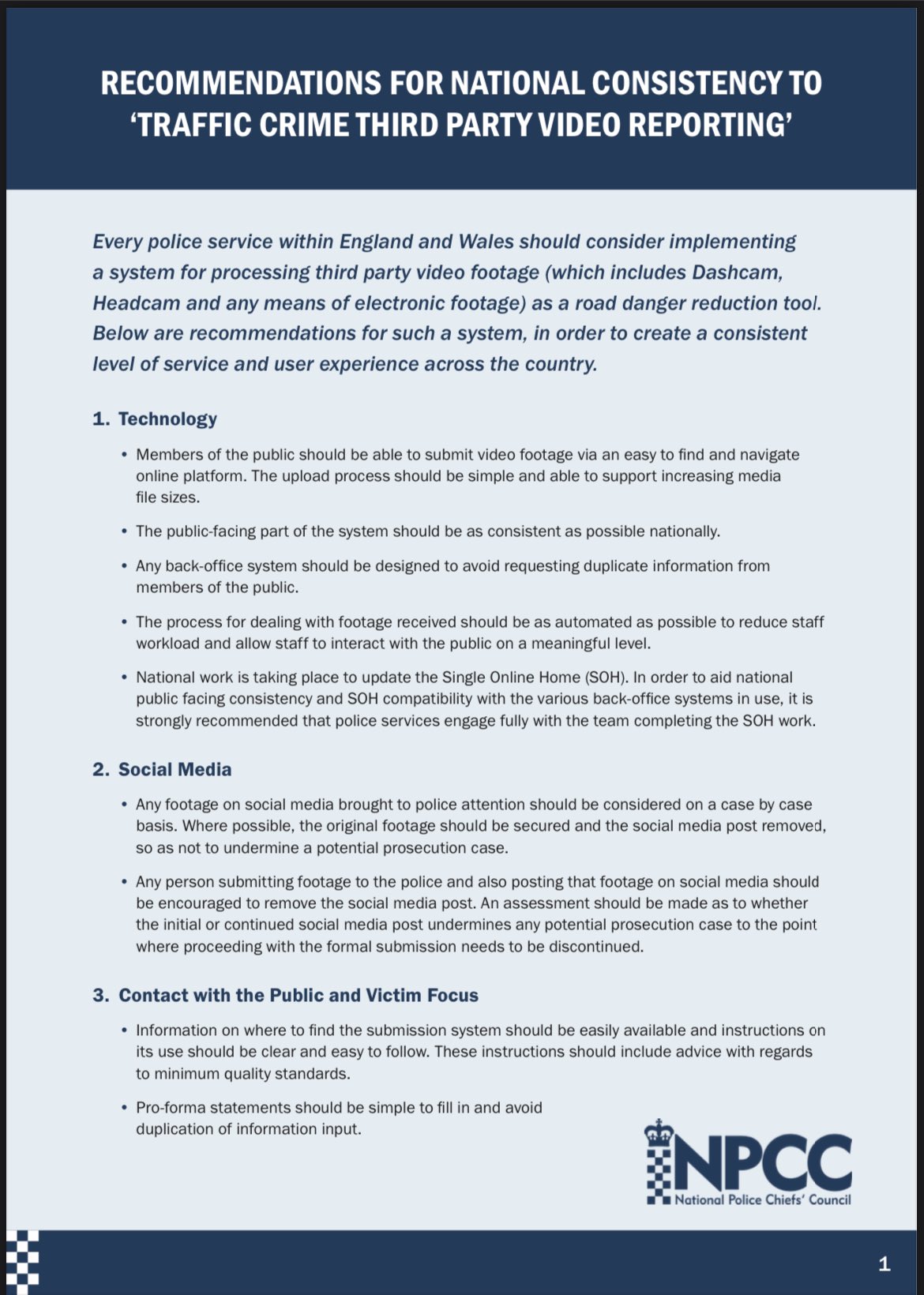
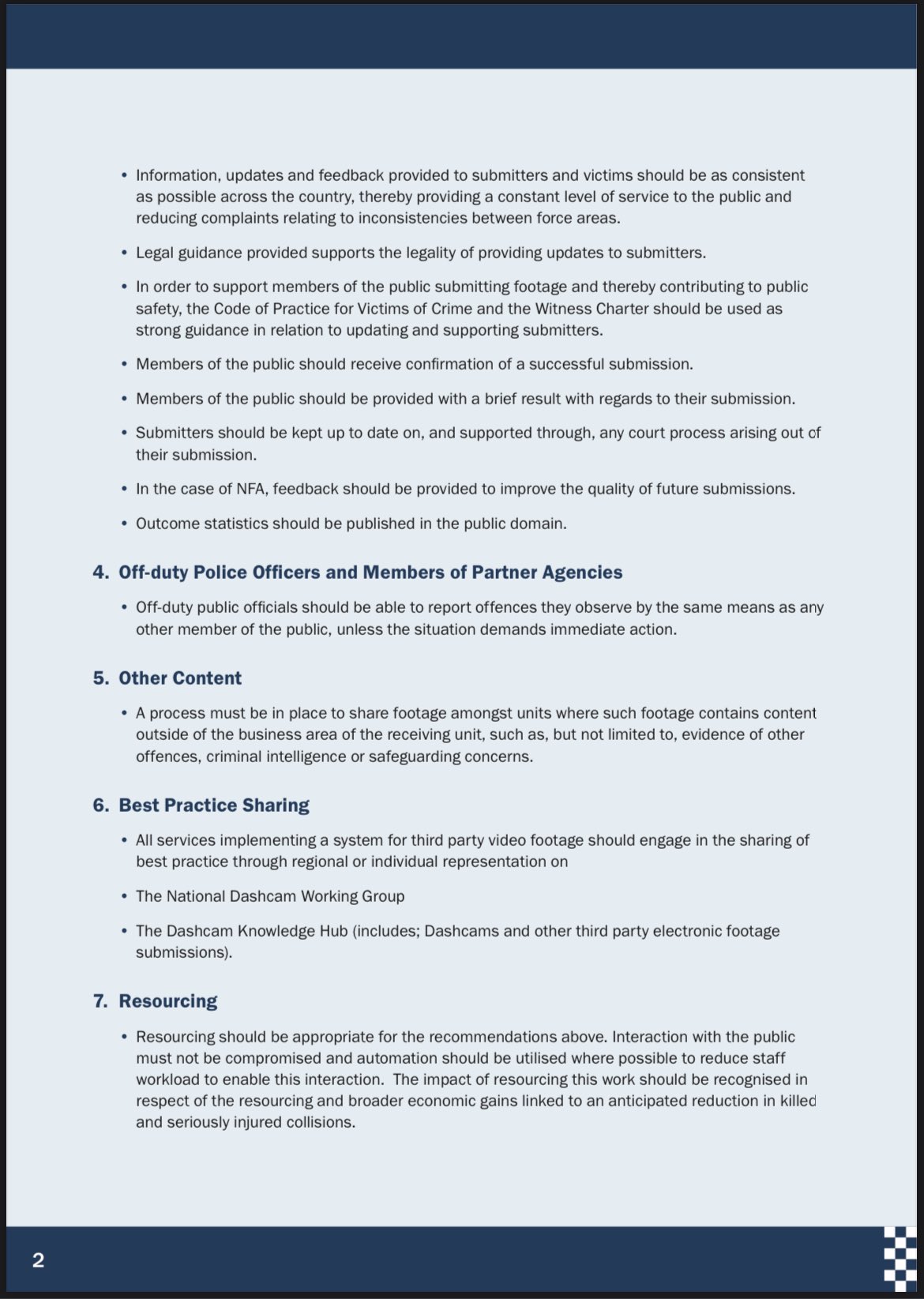
Also, regarding temporary Street Works and Road Works and temporary signage there’s this.
Safety at Street Works and Road Works: A Code of Practice:




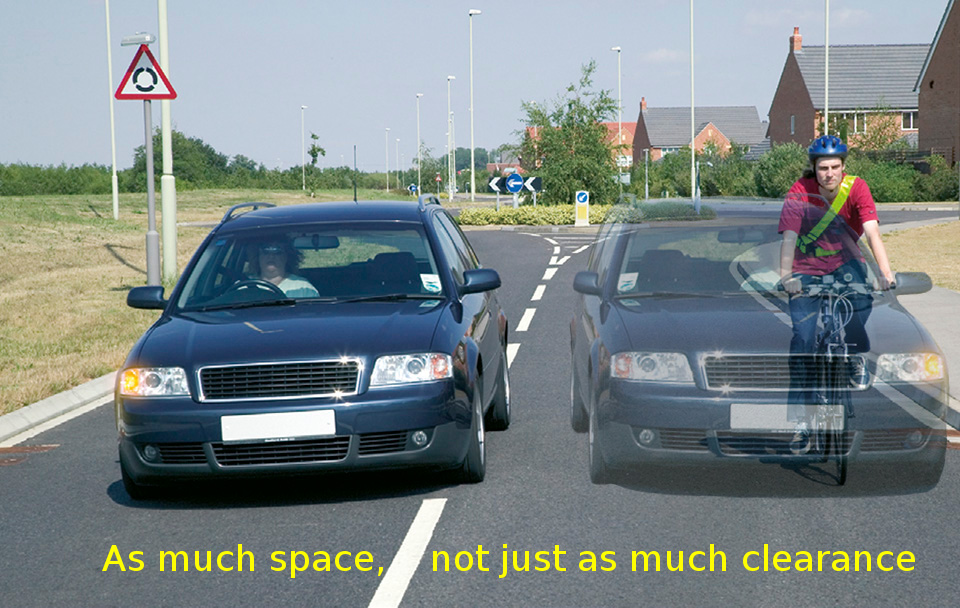
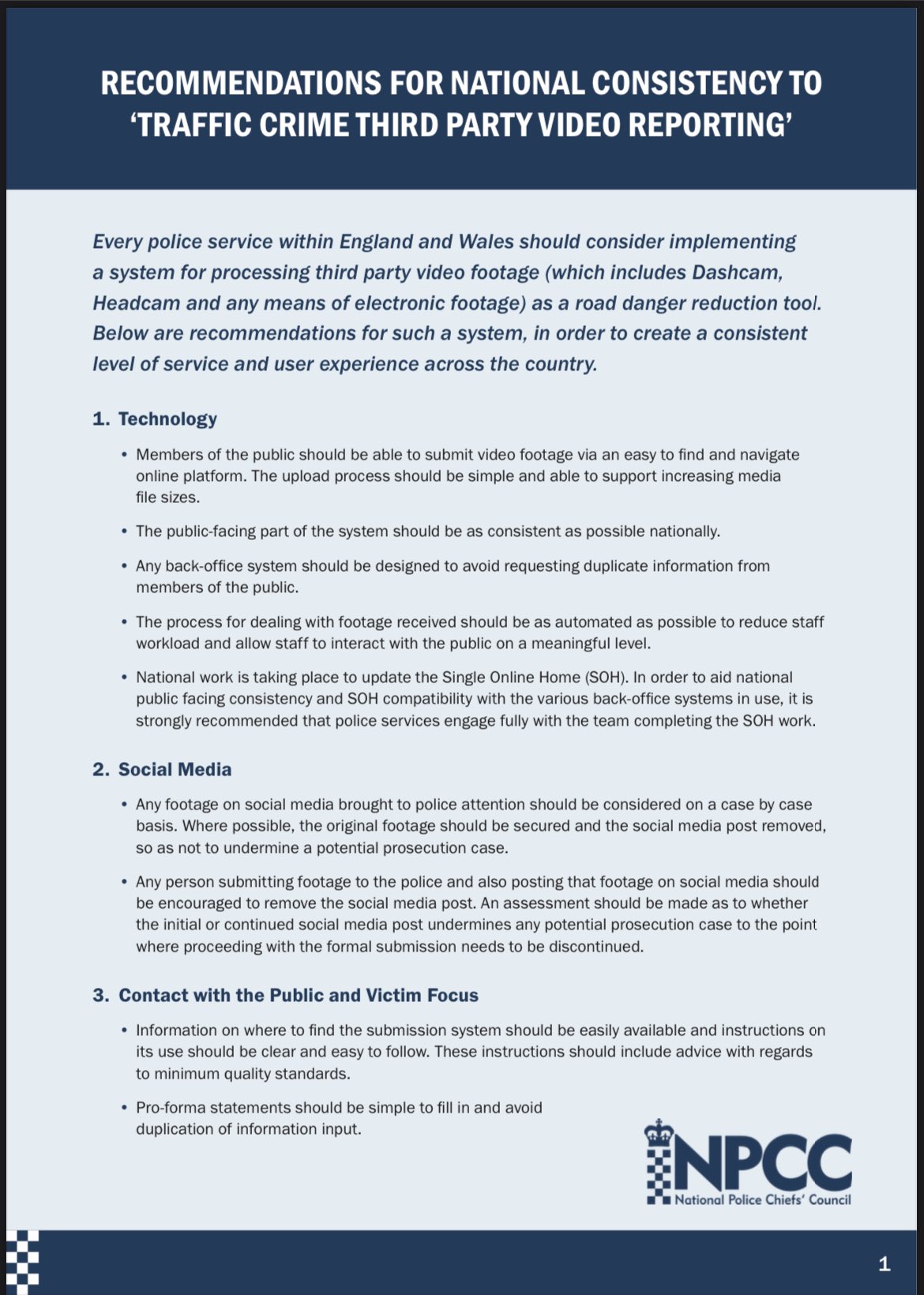
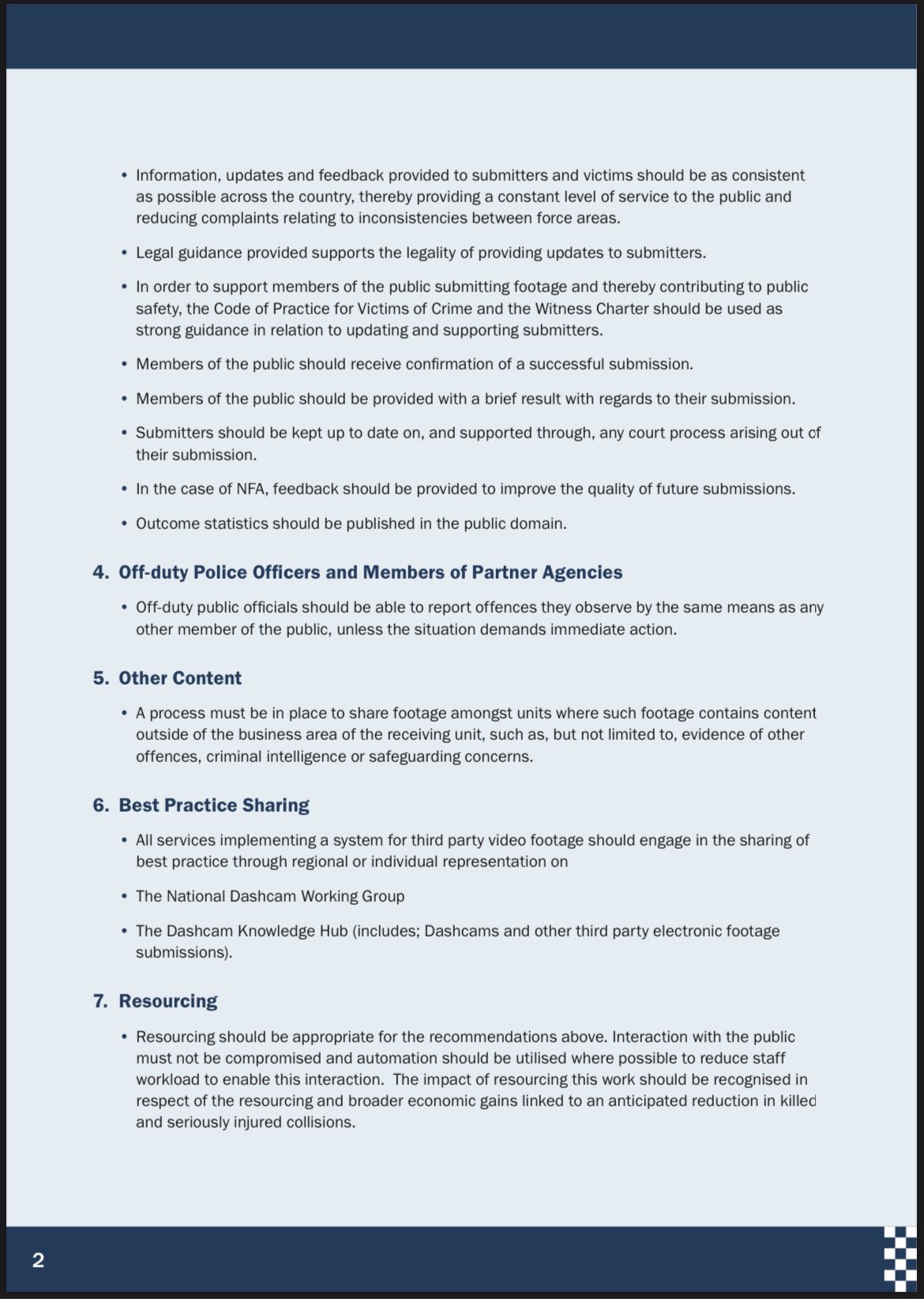


Leave a Reply